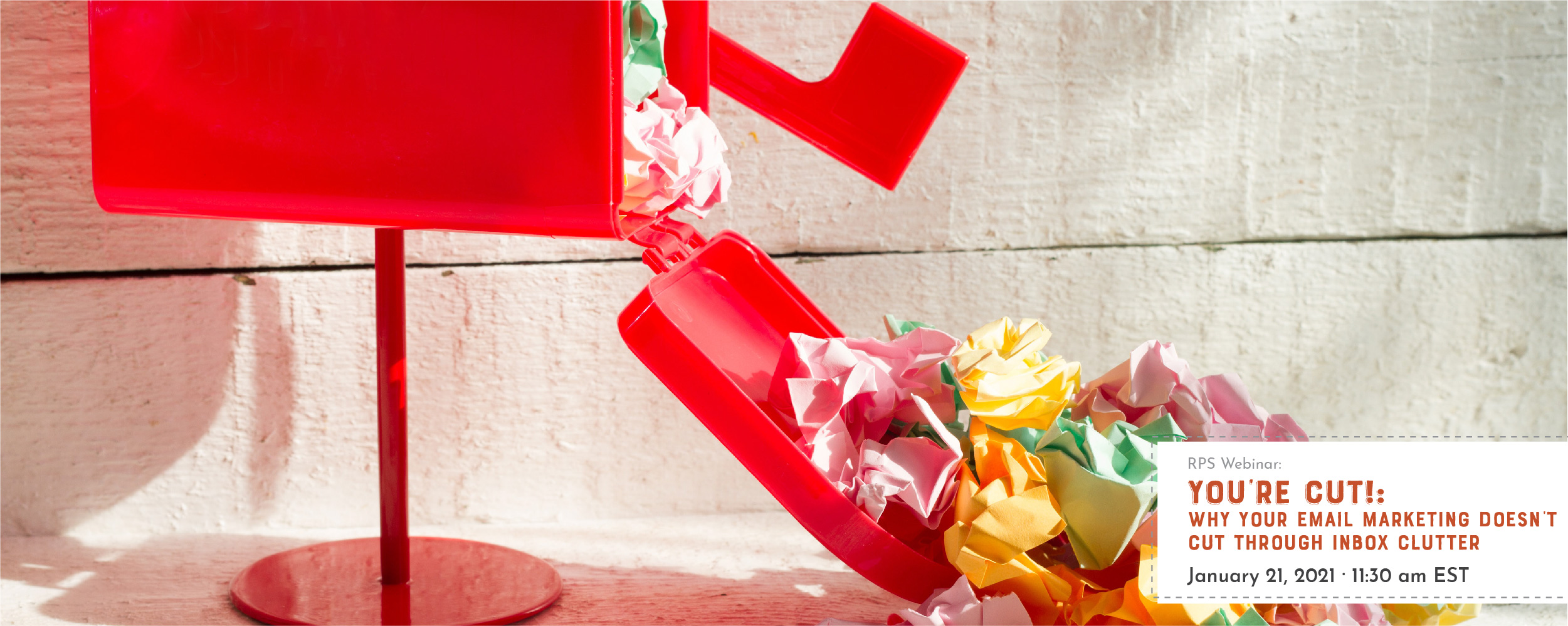Miss our latest webinar on email marketing? Read the full recap below, or scroll to the bottom of this post for the recording and to download our quick reference guide.

If you’ve ever heard the phrase “email marketing is dead” you might want to think again. According to the 2019 Adobe Email Usage Study, Americans spend around five hours a day checking email. Add that with the Radicati Group’s prediction that email users will surpass 4.2 billion by 2022, and it’s a pretty safe bet that email marketing won’t be flatlining anytime soon and if anything, you should be using this channel to connect with your audience if you aren’t already!
Now, you might be thinking “Isn’t social media a good, or an even better place to connect than email?” While it’s true that social media use and even internet use in general surged thanks to last year’s COVID-19 pandemic and is certainly worth using if your audience or target audience is hanging out there, an email list is still a valuable asset because you own the list!
Yep, you read that right. You can spend lots of time and energy (and even money) building out your presence and following on social media, and it can be gone in a matter of seconds if the platform is shut down. With your email marketing list, you own your list of subscribers and you have access to and the ability to contact these people until they either decide to opt-out or we’re finally able to start communicating telepathically. Beyond owning your contact list, there are a few other advantages to email marketing over social media, which include:
- Not competing with an algorithm to get your message across
- A higher return on investment
- A more personal connection with your audience
- A captive audience who actually wants to hear from you
Put Your Audience First

Now that you know email marketing is a channel you should be using, you might be wondering what you can do to make sure your email content resonates with your readers. Before you open a new draft, start by thinking about your audience and the story you want to stick with them. We love the idea Donald Miller presents in his book Building a StoryBrand, which is to ask what value you have to offer your customers and how you can make their lives better and create a story (or in this case an email) they will deem as useful.
Don’t Skimp on Subject Lines
Your subject line is what either entices your audience to open your email or scroll right past you. That’s why most email marketing experts say 50% of your time should be spent crafting your subject line. That might seem like overkill, but research has shown that 32% of email recipients open an email because of the subject line, so the effort is worth it.
So what makes a good subject line? Here are a few tips to keep in mind.
- KISS it: Keep it short and simple. Keep it short and sweet. No matter how you phrase the acronym, shorter is better not only because it gets your point across faster but also because you will run the risk of your subject line getting cut off if it’s too long. According to MailChimp, keep it to no more than nine words and 60 characters.
- Keep punctuation to a minimum. Too many punctuation marks or special characters can start to look spammy.
- Use personalization if possible, as this tends to help bump open rates up. If you want to do this, you need to make sure you’re capturing your audience members’ names along with their email addresses. You don’t want to be the person that sends an email that starts with “Dear {recipient name}.”
- Be direct and descriptive. Avoid being too trendy.
- Entice and intrigue your audience. Think outside the box.
- Make it relevant without sounding too much like a sales pitch.
- When appropriate, use language that adds a sense of urgency.
- If you are going to use an emoji, only use one and use it to supplement words instead of replacing them. Don’t use emojis if it doesn’t fit with your brand’s personality and tone.
Have a Strategy for How You Want to Use Email Marketing
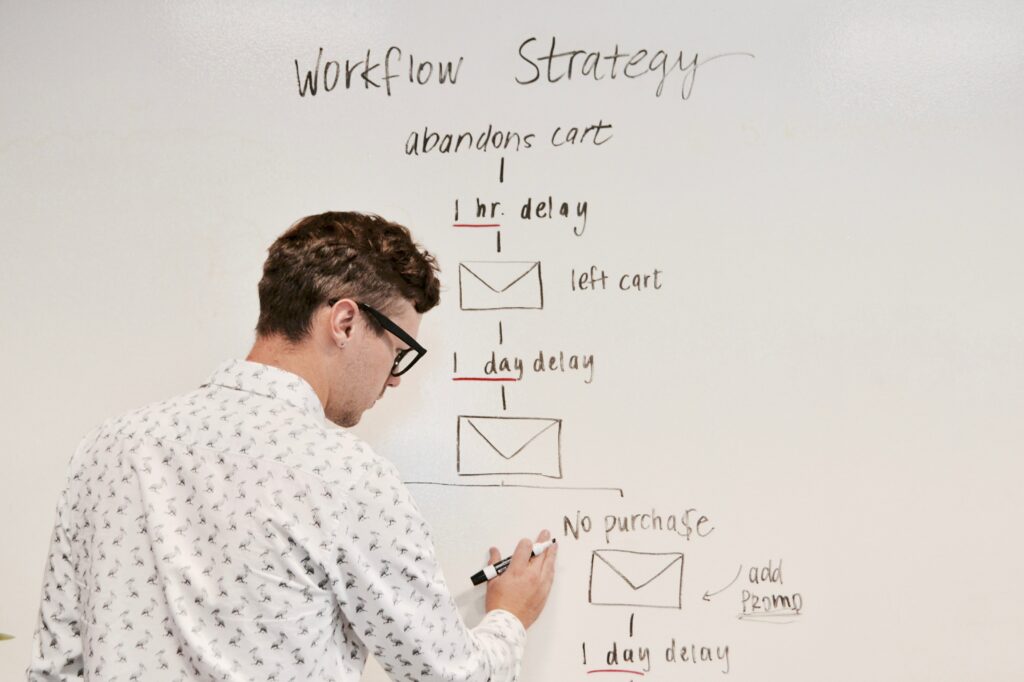
You may think that spending half your time crafting a subject line people can’t help but open means getting them to open the email is most important, but it’s what you want people to do with the information inside that really matters. That’s why you need an email strategy. You can use emails to drive traffic to your website, check out the latest video on your YouTube channel, to shop or even book an appointment. Think about your marketing goals and craft your email content to support those goals.
Be sure to provide very clear calls to action and if you’re sharing a link, be sure it directs your audience to the place you want them to land. Nothing is worse than clicking on a link that you think is going to allow you to make a reservation at your favorite restaurant only to land on the menu page.
Test the Waters
Most email marketing platforms offer some form of A/B testing, or split testing, which is a process that allows you to test two versions of a campaign with a portion of your audience. The version with the most clicks is the winner that then goes out to the rest of your audience after a predetermined testing period, whether it is a couple of hours or more.

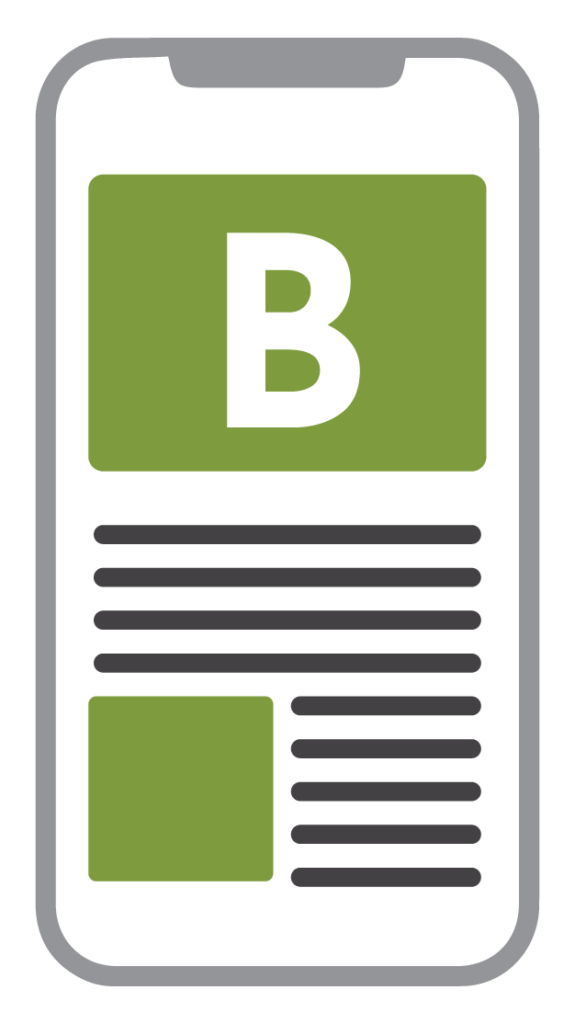
Typically, you can choose between testing different versions of a subject line, the from name (who the email is from), and the email content itself (for example, section titles, calls-to-action, and images). If you’re going to conduct an A/B test, it’s recommended to test it with a small portion of the overall list in order to receive the best results.
Tools of the Trade

A/B testing leads us to your email marketing infrastructure and the tools of the trade you can use to send your emails out. There are a lot of platforms and technologies to choose from, which can make it difficult to decide because while they all seem very similar and yet so different at the same time.
The two most common technologies are customer relationship management (CRM) and marketing automation software programs. Each software works a bit differently so let’s break it down a bit.
CRMS
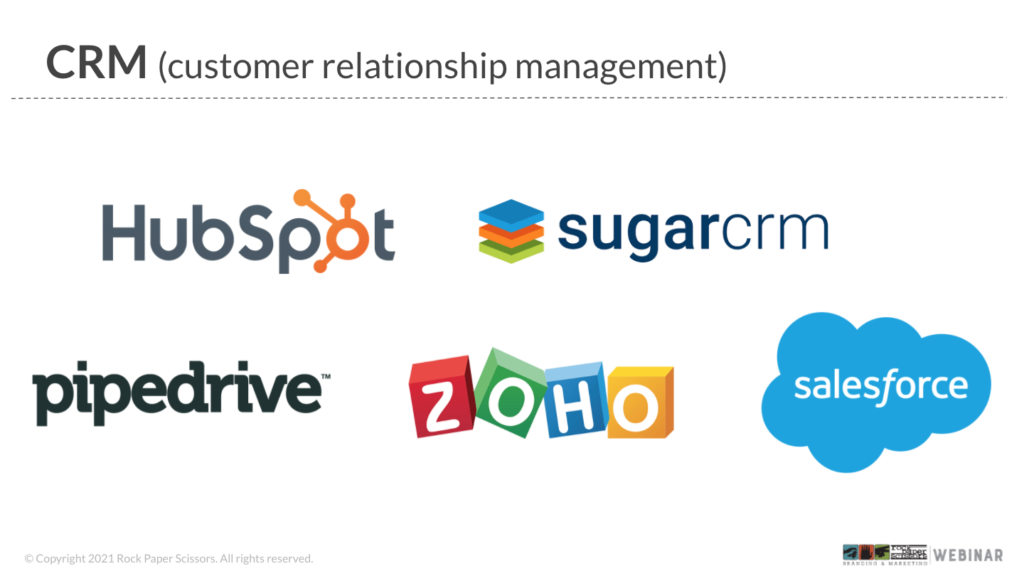
CRMs are designed to aid in the lead qualification process and allow you to track various customer and prospect data, including emails they have sent you, purchase records, and notes related to phone calls. They help you keep track of where a customer is in your sales process and allow you to maintain your customer’s contact information and communication history so all members of your team can easily find the info they need.
Marketing Automation
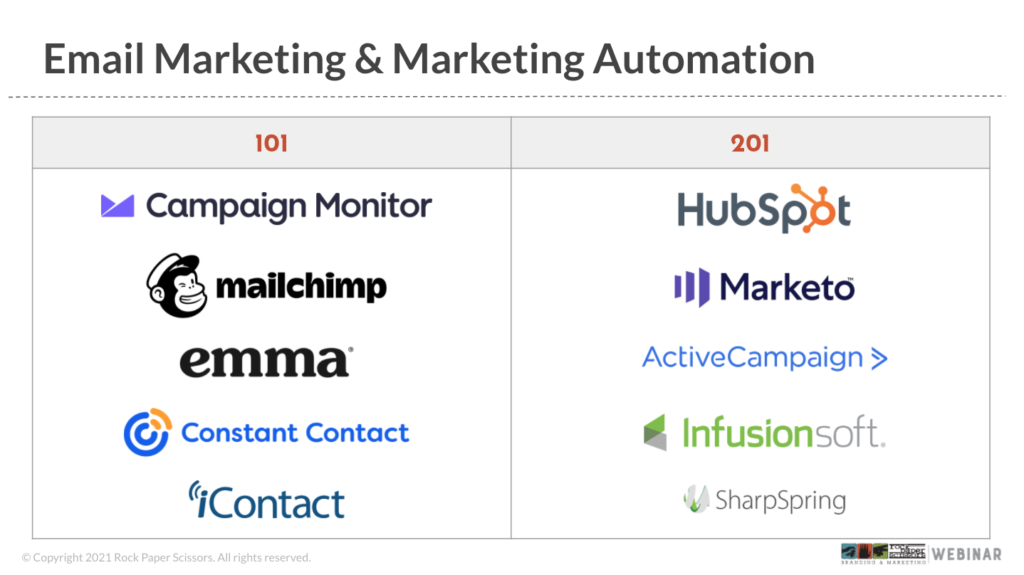
Marketing automation is what it sounds to be – a way to automate your marketing efforts like sending email campaigns to help support lead generation and nurturing. For example, if you sign up for a restaurant’s email list and receive a coupon for a free appetizer, that’s marketing automation at work.
Marketing automation software offers some great features such as the ability to segment your audience so you can curate campaigns based on data like an audience member’s preferences and interests, as well as create drip campaigns that send emails out at specific intervals to help you stay top of mind with your audience.
Segment Your Lists
We briefly described segmenting your audience when we talked about marketing automation. List segmentation can help you identify which members of your audience are interested in specific topics or are part of certain industries–essentially you can create any kind of segment you need in order to send more curated content to your audience members based on their interests, the products they’ve purchased from you before and so much more.
Is it time-consuming? Yes. Is it worth the effort to segment your lists? Heck yeah! In addition to giving people content they’re more likely to read, you’ll probably get better results when you send specific content for that segment.
But How Can I Grow My Email List?

If you’ve never built an email list, there are quite a few ways you can get started. The biggest thing to remember is that you should always ask someone if they want to join your email list or offer a way for them to sign up to receive your emails.
Adding new customers is the easiest way to begin, but you need to be sure you are streamlining or automating this process so you don’t have to think about it much. This could include asking them to opt-in as you onboard them into your business; for example, if your new client form is online you can include a checkbox they can tick to sign up for your list.
Another simple way to grow your list is through networking. For example, if you’re at your Chamber of Commerce’s monthly meeting and exchange business cards with some folks, send a follow-up email stating how great it was to meet them and invite them to join your email list.
Inbound marketing initiatives are another way to grow your email list but it takes a bit more effort. One of the most common ways list growth is achieved through inbound marketing is offering something in exchange for an individual’s email address. For instance, you could offer a whitepaper on the best ways to save on your car insurance premiums in exchange for a person’s email address.

In his book Launch, Jeff Walker offers yet another tactic for growing your list through a joint venture, or JV, launch. Through this process, you can tap into the audiences of any partners you are working with to put the content you’ve already created into their hands by having your partners tell them about it and driving their audience to your content to learn more about what you have to offer and in exchange, you offer your partners a commission if you make any sales from the leads they send your way.
The Big No-No

Buying a list of emails is the big no-no of email marketing. As we mentioned previously, you should have someone’s consent before you add them to your email list, whether that is through a verbal confirmation, a sign-up form on your website, or some other form of allowing you permission to email them. People on a list you’ve purchased most likely won’t know you and the likelihood of converting them into a customer is pretty slim. Plus, sending emails to purchased contacts can damage your deliverability reputation, and your email service provider could suspend your account if you’re flagged as sending spam too many times. Sending emails to contacts who have not opted into your email list also violates the European General Data Protection Regulation.
The CAN-SPAM Act
No, we’re not talking about the SPAM you eat. This is a law that sets the rules you need to follow for commercial email, including messaging requirements, and also gives recipients the right to opt-out from receiving future emails. The requirements of the CAN-SPAM Act can be found on the Federal Trade Commission’s website. The main ones to know are:

- Don’t include false or misleading info in the header
- Don’t use a deceptive subject line
- Identify your message as an advertisement
- Include your valid physical postal address
- Tell people how to opt-out from receiving future emails
- Honor opt-out requests quickly
- Keep an eye on what other people are doing on your behalf
It’s important to note if you don’t follow the rules you can be subject to penalties over $43,000 for each separate email in violation. In addition to fines, you could wind up having your domain, as well as your email account, blacklisted by internet service providers, Google, Microsoft, and other technology companies designed to stop spammers if you are sending a large number of emails at one time without using a third-party email service to distribute your emails OR if your emails are generating a high number of bounces.
The moral of this story – play by the rules, play nice, and clean your email lists regularly.
Getting Started
Now you’re ready to apply everything you’ve just learned. Here’s a checklist to help you out.
- Choose or change your email platform. If you’re new to email marketing, take time to explore the options and see some demos so you can find the best fit. If not, determine if you need to make a change or stick with what you’ve got.
- Clean up your lists. It takes time, but it’s worth it because cleaning your list helps you remove contacts you no longer need, prompts you to see if you need to update any contacts, and will eventually help yield better results with your campaigns. The frequency at which you need to scrub your lists can depend greatly on how often you’re sending out emails. If nothing else, you should clean your list at least once a year.
- Determine how you want to grow your list.
- Create an email calendar to help you consolidate your planning so you can keep up and maintain consistency.
Measuring Your Efforts

Like other marketing tactics, you need to be sure to measure your efforts so you can determine whether you are achieving success with this channel. As you’re considering the results of your efforts, think about the following.
- What is a good email?: So often people expect a 100% open rate and a really high click-through rate (CTR) and while that would be great, it’s not realistic. If you’re getting an open rate of about 20% and a CTR of 7.8%, you’re doing really well according to HubSpot.
- How do you find benchmarks?: There are tons of reports out there from a variety of marketing automation, CRM, and email service providers that offer breakdowns based on a number of industries. A quick Google search will yield plenty of results you can read in your copious amounts of spare time.
What Can I Do if I Don’t Like My Stats?
If you aren’t seeing the results you want, there are quite a few things you should do before you completely change your email marketing strategy. Neil Patel recommends to first check your deliverability rates to make sure your emails are landing in people’s inboxes. If your deliverability rate isn’t all that great, try asking your email recipients to add your email address to the contacts–this will help you avoid their email service provider mistaking your email as spam or junk.
If your deliverability rate isn’t the problem, then think about the email itself and your audience. Here are some checkpoints to help you determine where you might need to make some tweaks to test in your next email.
- Is your subject line clear, concise, and enticing?
- Is your email mobile friendly?
- Are your calls to action clear?
- Are you sending content based on our audience segments?
- Is your story easy to understand?
- Are you sending emails too frequently?
It takes time to build out a strong email marketing program and keep healthy lists, but it’s time worth spending. Email marketing isn’t going away anytime soon, so consider using this channel to connect with your audience in 2021.
Need some help getting started or refining your email marketing strategy? Fill out the form below to download our email marketing quick reference guide, or contact us for a marketing consultation and we’ll look at where you’re at, or what you’re starting with, and talk about ways to help you grow and improve in this marketing channel.

